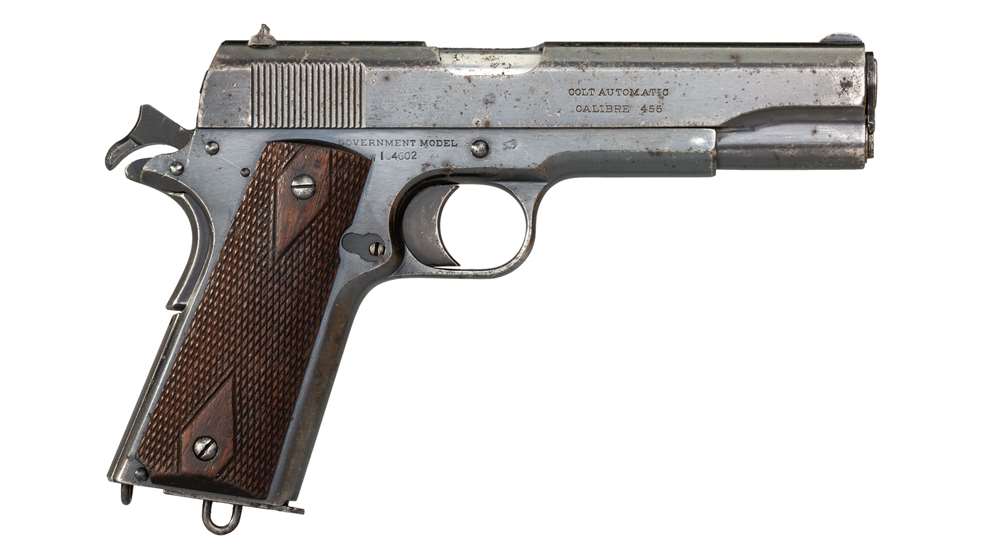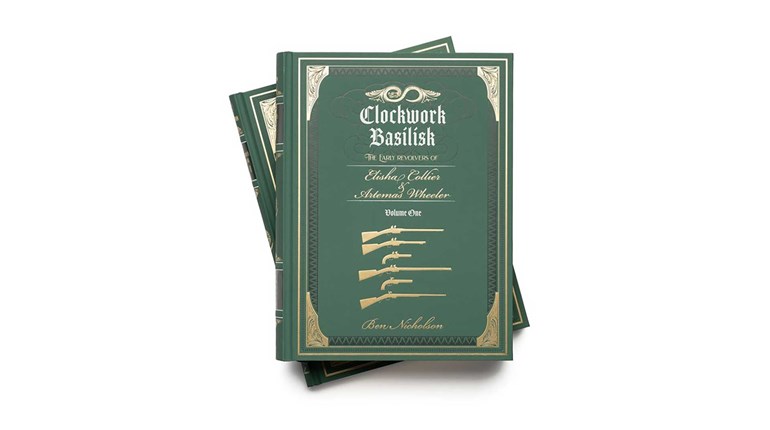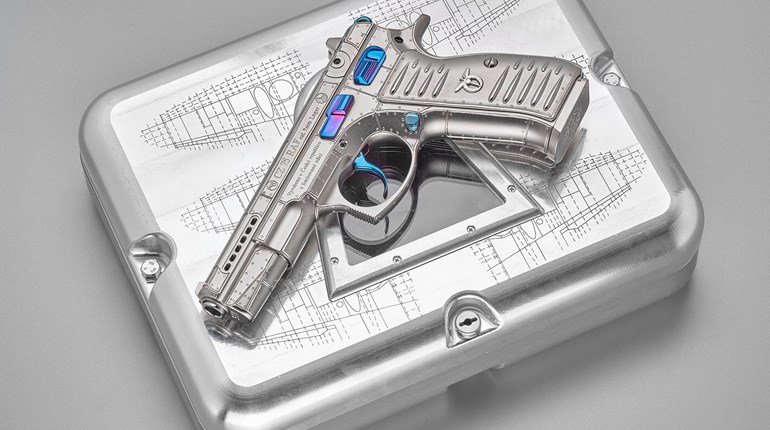
For years, my father had tormented me by letting me know he had a Colt .45 in the house, but I never knew where it was, nor was I even allowed to set eyes upon the shooting iron that I imagined was nickel-plated with a 5.5-inch barrel and stag grips. Many a daydream was spent in wistful thinking about how I might tame the West with such a fine revolver but alas, ’twas not to be.
Many years later, he learned that I had a firearm he desired and offered to trade mine for his. I was elated to finally set hands upon the previously sight-unseen Colt of my dreams. Imagine my surprise when I unwrapped it and discovered that it was not nickel-plated, but a dull black; it had rosewood grips, not stag and it was .45 ACP and not .45 Colt. Imagine my surprise and disappointment when I read the writing on the slide and saw it wasn’t a Colt but a Konigsberg in 11.25 mm.
Aside from the Norwegian M-1914, my father’s gun and the Argentine 1911 models, it was the 1911 in .455-caliber that intrigued me the most, and most of the 1911s in .455 wound up with the Royal Air Force (RAF), another collecting obsession of mine.
The year 1912 was, by all accounts, most interesting. New Mexico and Arizona joined the Union, the Titanic sank, the Royal Flying Corps (RFC) and Royal Naval Air Service (RNAS) were established and Colt started shipping 1911s to Britain and Norway. The Norwegians soon licensed the Browning design (with one minor change) and began to produce their own version of the 1911 at their national arms factory in Konigsberg. The British started purchasing the Colt .45 ACP in May of 1912, and in July of 1915 started purchasing the 1911 from Colt in .455 Eley, also known as .455 Webley Self-Loading MK I, a cartridge developed in 1910 to chamber in the Webley & Scott semi-automatic pistol.

The .455 Eley cartridge was just a bit bigger than the .45 ACP and required a specially made and marked magazine as well as a barrel commensurate with the caliber’s increased diameter. Magazines for the Colt 1911 in .455 will have a lanyard loop and stamp on the bottom that reads: “CAL .455 ELEY.” On the right side of the slide it reads:
“Colt Automatic/Calibre .455.” Some magazines were made in England and have a circular lanyard loop as opposed to the standard semi-circular loop. There were also 20-round .455 magazines made to facilitate use of the gun in air-to-air combat, which wasn’t uncommon in early aerial combat.
Approximately 4,200 Colt 1911s in .45 ACP were shipped to the UK between 1912 and 1915. These will bear British proofmarks and their serial numbers will begin with a “C” for Civilian or non-U.S. military sales. The 1911s in .455 Eley all have “W” prefixes in their serial numbers and number about 13,000 units, making for a total of 17,500 Colts of both calibers shipped between 1912 and 1919 when the contracts ended.
On April 1, 1918, the RFC and the RNAS were merged into the Royal Air Force (RAF) and the new RAF received the majority of the 1911s manufactured by Colt. There was a bit of a hiccup in 1917 when the U.S. entered the Great War and Colt informed the British Purchasing Commission that its orders would be suspended so all of the company’s efforts could be put to producing arms for the U.S. military. Chief of Ordnance, MG William Crozier, authorized continued shipments to the UK at a rate of between 300 and 600 pistols a month without penalty.
It is unknown just how many 1911s of both calibers were shipped before the RAF was established. Colt didn’t ship them in sequence and the serial numbers are all over the place, but it is safe to say that nearly half of the 17,500 manufactured were in service by the transition date. Collectors eagerly seek out the .455 Colts with RAF stamps on the left side of the frame, above the trigger guard, and can safely assume that they were in service during the Great War and perhaps the Second World War as well. I have never seen any with RFC marks denoting use before April 1, 1918, but they certainly were in use—which leaves us to speculate as to when they were marked with the RAF stamps.
Today’s collector searching for an RAF gun will wish to consult Charles W. Clawson’s book on the commercial 1911s for a full listing of serial numbers and dates shipped. Recently, I have found an RAF-marked gun with “Calibre .455” stamped on the slide with the last “5” in “.455” crossed out with an “X” and the barrel and magazine standard .45 ACP. Most likely this was done to indicate that the gun was no longer chambered in .455 Eley, but converted to .45 ACP, a more commercially available cartridge. Who did the conversion, and when, remains a vital question. Was it done by the British for use during World War II when the .455 Eley cartridge was all but totally obsolete? Or was it done to facilitate surplus sales in the U.S., where .455 Eley was next to impossible to obtain?
The often exercised trope “If this gun could only talk” is somewhat abated by the overwhelming presence of slide and frame marks as well as the preponderance of British proof and inspector marks found on all of these pistols. If you know how to decipher these modern hieroglyphics, then you can indeed get it to speak.




































